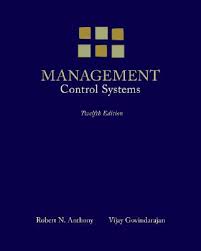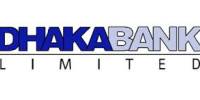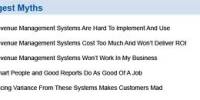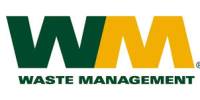Introduction
In some business units, the focus is on profit as measured by the difference between revenues and expenses. In other business units, profit is compared with the assets employed in earning it. We refer to the latter group of responsibility centers as investment centers and, in this chapter, discuss the measurement problems involved in such responsibility centers. We agree that an investment center is a special type of profit center, rather than a separate, parallel category. However, there are so many problems involved in measuring the assets employed in a profit center that the topic warrants a separate chapter.
We first discuss each of the principal types of assets that may be employed in an investment center. The sum of these assets is called the investment base. We then discuss two methods of relating profit to the investment base: (1) the percentage return on investment, referred to as ROI, and (2) economic value added, called EVA. We describe the advantages and qualifications of using each to measure performance. Finally, we discuss the somewhat different problem of measuring the economic value of an investment center, as compared to evaluating the manager in charge of the investment center.
We discussed various assets ant that way of measuring and controlling this assets.
Return on Investment (ROI)
The term “return on investment” is sometimes used to refer to this notion, but such usage may be confusing because the term also refers to the average annual return on investment method, Which is a capital expenditure evaluation technique, and to a return or yield on equity capital also has some value as an internal measure, but for financial, not operating management.
The rate of return on capital employed may be expressed as the product of two factors: the percentage of profit to sales and the capital-employed turnover rate. In equation form, the rate of return is develops as follows:
= Rate of Return on
Capital Employed
= % of Profit to Sales
Capital Employed Turnover Rate
If sales were canceled out in the two fractions, the end result would still be the same. However, the shortened formula does not express the real objective of the concept, which deals with two independent variables- profit on sales and turnover of capital employed. Using the full formula gives management a better comprehension of the elements leading to the final result. The profit percentage reflects a cost-price relationship affected by the level and mix of sales, the price of products sold, and the success or lack of success in maintaining satisfactory control of costs. The turnover rate reflects the rapidity with which committed assets are employed in the operations.
Economic Value Added (EVA)
We used the term “residual income” instead of economic value added. These two concepts are effectively the same. EVA is a trademark of stem Stewart & Co. It illustrates how a firm can take a concept that has been described in this and other texts for many years, slap a new name on it, and then register this name as a trademark.
Economic value added compares differences in present and future earning of similar, firms in the same industry. Ostensibly, the differences are due to human organization. Future earnings are forecast and discounted to find their present value. A portion there of is allocated to human resource based on their contribution.
EVA=Net profit- Capital charge
Where
Capital charge = Cost of capital * Capital employed
Another way to state equation (1) would be:
EVA= Capital employed (ROI-Cost of capital)
There is no rate of return on capital employed that is satisfactory for companies. Manufacturing companies is various industries will have different rates, as will utilities, banking institutions, merchandising firms, and service companies. Management can establish an objective rate by using judgment and experience supported by comparisons with other companies. Every industry has companies with high, medium, and low rates of return. Structure and size of the firm influence the rate considerably. A company with diversified divisions might have only a fair return rate when all of them are pooled in the analysis. In such cases, it seems advisable to establish separate objectives for each division as well as for the total company. Methods for divisional analyses are discussed in a later section of this chapter.
COMPARISON BETWEEN EVA AND ROI
ROI Method ($000)
Business Unit | (1) Cash | (2) Receivables | (3) Inventories | (4) Fixed Asset | (5) Total investment | (6) Budgeted Profit | (7) ROI Objective |
| A | $10 | $20 | $30 | $60 | $120 | $24.0 | 20% |
| B | 20 | 20 | 30 | 50 | 120 | 14.4 | 12 |
| C | 15 | 40 | 40 | 10 | 105 | 10.5 | 10 |
| D | 5 | 10 | 20 | 40 | 75 | 3.8 | 5 |
| E | 10 | 5 | 10 | 10 | 35 | (1.8) | (5) |
EVA Method ($000)
Current Assets Fixed Assets
Business Unit | (1) Profit Potential | (2) Amount | (3) Rate | (4) Required Earnings | (5) Amount | (6) Rate | (7) Required Earnings | Budgeted EVA (1)-[(4)+(7)] |
| A | 24.0 | $60 | 4% | $2.4 | $60 | 10%10 | $6.0 | $15.6 |
| B | 14.4 | 70 | 4 | 2.8 | 50 | 10 | 5.0 | 6.6 |
| C | 10.5 | 95 | 4 | 3.8 | 10 | 10 | 1.0 | 5.7 |
| D | 3.8 | 35 | 4 | 1.4 | 40 | 10 | 4.0 | (1.6) |
| E | (1.8) | 25 | 4 | 1.0 | 10 | 10 | 1.0 | (3.8) |
Assume that the company’s required rate of rate of return for investing in fixed assets is 10 percent after taxes, and that the company wide cost of money tied up in inventories and receivables is 4 percent after taxes. The top section of Exhibit 6-12 shows the ROI calculation. Columns one through five show the amount of investment in assets that each business unit budgeted for the coming year. Column six is the amount of budgeted profit. Column seven is the budgeted profit by the budgeted investment; this column, therefore, shows the ROI objectives for the coming year for the business unites.
Only in Business Unit C is the ROI objective consistent with the companywide cutoff rate, and in no unit is the objective consistent with the companywide 4 percent cost of carrying current assets. Business Unit A would decrease its chances of meeting its profit objective if it did not earn at least 20 percent on added investments in either current or fixed assets, whereas Units D and E would benefit form investments with a much lower return.
EVA corrects these inconsistencies. The investments, multiplied by the appropriate rates, are subtracted from the budgeted profit. The resulting amount is the budgeted EVA. Periodically, the actual EVA is calculated by subtracting from the actual profits the actual investment multiplied by the appropriate rates. The lower section shows how the budgeted EVA would be calculated. For example, if Business Unit A earned $28000 and employed average current assets of $65000 and average fixed assets of $65000, its actual EVA would be calculated as follows:
EVA=28000-0.04(65000)-0.10(65000)
=28000-2600-6500
=18900
This is $3300($ 18900-$ 15600) better than its objective.
Note that if any business unit earns more than 10 percent on added fixed assets, it will increase its EVA. (In the cases of C and D, the additional profit well decreases the amount of negative EVA, which amounts to the same thing.) A similar result occurs for current assets. Inventory decision rules will be based on a cost of 4 percent for financial carrying charges. (Of course, there will be additional costs for physically storing the inventory. )In this way the financial decision rules of the business units will be consistent with those of the company.
EVA solves the problem of differing profit objectives for the same asset in different business units and the same profit objective for different assets in the same unit. The method makes it possible to incorporate in the measurement system the same decision rules used in the planning process: The more sophisticated the planning process, the more complex the EVA calculation can be. For example, assume the capital investment decision rules call for a 10 percent return on general-purpose assets and a 15 percent return on special-purpose assets. Business unit fixed assets can be classified accordingly, and different rates applied when measuring performance. Managers may be reluctant to invest in improved working conditions, pollution-control measures, or other social goals if they perceive them to be unprofitable. Such investments will be much more acceptable to business unit managers if they are expected to earn a reduced return on them.
EVA VESUS ROI
Most companies employing investment centers evaluate business units in the basis of ROI rather than EVA. There are there apparent benefits of an ROI measure. First, it is a comprehensive measure in that anything that affects financial statements is reflected in this ratio. Second, ROI is simple to calculate, easy to understand, and meaningful in an absolute sense. For example, an ROI of less than 5 percent is considered low on an absolute scale, and an ROI of over 25 percent is considered high. Finally, it is a common denominator that may be applied to any organizational unit responsible for profitability, regardless of size or type of business. The performance of different units may be compared directly to one another. Also, ROI data are available for competitors and can be used as a basis for comparison.
The dollar amount of EVA does not provide such a basis for comparison. Nevertheless, the EVA approach has some inherent advantages. There are four compelling reasons to use EVA over ROI.
First, with EVA all business units have the same profit objective for comparable investments. The ROI approach, on the other hand, provides different incentives for investments across business units. For example, a business unit that currently is achieving an ROI of 30 percent would be reluctant to expand unless it is able to earn an ROI of 30 percent or more on additional assets; a lesser return would decrease its overall ROI below its current 30 percent level. Thus, this business unit might forgo investment opportunities whose ROI is above the cost of capital but below 30 percent.
ROI AND EVA AS MEASURE FOR FINANCIAL PERFORMANCE
In our examination of the alternative treatments of assets and the comparison of ROI and EVA- the two ways of relating profit to assets employed-we are primarily interested in how well the alternatives serve these two purposes of providing information for sound decision-making and measuring business unit economic performance.
Focusing on profits without considering the assets employed to generate those profits is an inadequate basis for control. Except in certain types of service organizations, in which the amount of capital is insignificant, an important objective of a profit-oriented company is to earn a satisfactory return on the capital that the company uses. A profit of $1 million in a company that has $10 million of capital does not represent as good a performance as a profit of $1 million in a company that has only $5 million of capital, assuming both companies have a similar risk profile.
Unless the amount of assets employed is taken into account, it is difficult for senior management to compare the profit performance of one business unit with that of other units or to similar outside companies. Comparing absolute differences in profits is not meaningful if business units use different amounts of resources; clearly, the more resources used, the greater the profits should be. Such comparisons are used to judge how well business unit managers are performing and to decide how to allocate resources.
In general business unit managers have two performance objectives. First, they should generate adequate profits form the resources at their at the disposal. Second, they should invest in additional resources only when the investment will produce an adequate return.(Conversely, they should disinvest if the expected annual profits of any resource, discounted at the company’s required earnings rate, are less than cash that could be realized from its sale.) The purpose of relating to investments is to motivate business unit managers to accomplish these objectives. As we shall see, there are significant difficulties involved in creating a system that focuses on assets employed in addition in addition to the focus on profits.
EXHIBIT 1-1 Business Unit Financial Statements
Balance Sheet
($000)
Current assets: Current liabilities:
Cash……………….. $ 50 Accounts payable………………..$ 90
Receivables………… 150 Other current………………..110
Inventory………………..200
Total current assets….. 400 Total current liabilities………………..200
Fixed assets:
Cost……………….. $600 corporate equity………………..500
Depreciation………………..300
Book value………………..300
Total assets………………..$700 Total equity………………..$2DD
Income Statement
Revenue………………………………………………………………………………………..$ 1000
Expenses, except depreciation…………………………………….$850
Depreciation…………………………………………………………..50 900
Income Before taxes 100……………………………………………………………………
Capital charge ($400*10%)………………………………………………………………….50
Economic Value added (EVA) …………………………………………………………….50
=20%
Exhibit 1-1 a hypothetical, simplified of business unit financial statements that will be used throughout this analysis. (In the interest of simplicity, income taxes have been omitted from this exhibit and generally will be omitted from discussion in this chapter. Including income taxes would change the magnitudes in the calculations that follow, but it would not change the conclusions.) The exhibit shows the two ways of relating profits to assets employed- namely, through return on investment and economic value added.
Exhibit 1-2 Methods used to Evaluate Investment Centers
_____________________________________________________________________
United States (1) Holland (2) India (3)
Number of usable responses 638 72 39
Companies with 2 or more investment centers 500(78%) 59(82%) 27(70%)
Percentage of companies using residual Income or EVA
(With 2 or more investment centers) 36% 19% 8%
Return on investment (ROI) is a ratio. The numerator is income, as reported on the income statement. The denominator is assets employed. In the denominator is taken as the corporation’s equity in the business unit. This amount corresponds to the sum of concurrent liabilities plus shareholder’s equity in the balance sheet of a separate company. It is mathematically equivalent to total assets less current liabilities, and to noncurrent assets plus working capital.
Economic value added (EVA) is a dollar amount, rather than a ratio. It is found by subtraction a capital charge from the net operating profit. This capital charge is found by multiplying the amount of assets employed by a rate, which is 10 percent in Exhibit 6-1. We shall discuss the derivation of this rate in a later section.
Example. AT & T used the economic value added measure to evaluate business unit managers. For instance, the long-distance Group consisted of 40 business units which sold services such as 800 numbers, telemarketing, and public telephone calls. All the capital costs, from switching equipment to new product development, were allocated to these 40 business units. Each business unit manager was expected to generate operating earnings that substantially exceeded the cost of capital.
In a Govmdarajan survey, 78 percent of the respondents used investment centers (Exhibit l-2).4 of the US companies using investment centers, 36 percent evaluated them on economic value added. Practices in other countries seem to be similar to those in the United States (See Exhibit 6-2).
For reasons to be explained later EVA is conceptually superior to ROI and, therefore, we shall generally use EVA in our examples. Nevertheless, it is clear from the surveys that ROI is more widely used in business than EVA.
MEASURING AND CONTROLLIND ASSET EMPLOYED
In deciding what investment base to use to evaluate investment center managers, headquarters asks two questions: First, what practices will induce proper amount and kind of new assets? Presumably, when their profits are related to asset6s employed, business unit managers will try to improve their performance as measured in this way. Senior management wants the actions that they take toward this end to be in the best interest of the whole corporation. Second, what practices best measure the performance of the unit as an economic entity?
Cash
Most companies control cash centrally because central control permits use of a smaller cash balance than would be the case if each business unit held the cash balances it needed to weather the unevenness of its cash inflows and out flows. Business unit cash balances may well be only the “float” between daily receipts and daily disbursements. Consequently, the actual cash balances at the business unit level tend to be much smaller than would be required if the business unit were an independent company. Many companies, therefore, use a formula to calculate the cash to be included in the investment base. For example, General Motors was reported to use 4.5 percent of annual sales; Du Pont was reported to use two months’ costs of sales minus depreciation.
One reason to include cash at a higher amount than the balance normally carried by a business unit is that the higher amount is that the higher amount is necessary to allow comparisons to outside companies. If only the actual cash were shown, the return by internal units would appear abnormally high and might mislead senior management.
Some companies omit cash form the investment base. These companies reason that the amount of cash approximates the current liabilities. If this is so, the sum of accounts receivable and inventories will approximate the amount of working capital.
Receivables
Business unit managers can influence the level of receivables indirectly, by their ability to generate sales; and directly, by establishing credit terms and approving individual credit accounts and credit limits, and by their vigor in collecting overdue amounts. In the interest of simplicity, receivables often are included at the actual end-of-period balances, although the average of intraperiod balances is conceptually a better measure of the amount that should be related to profits.
Whether to include accounts receivable at selling prices or at of goods sold is debatable. One could argue that the business unit’s real investment in accounts receivable is only the cost of goods sold and that a satisfactory return on this investment is probably enough. On the other, it is possible to argue that the business unit could reinvest the money collected from accounts receivable, and therefore , accounts receivable should be included at selling prices. The usual practice is to take the simpler alternative-that is to include receivables at the book amount; which is the selling price less an allowance for bad debts.
If the business unit does not control credits and collections, receivables may be calculated on a formula basis. This formula should be consistent with the normal payment penod-for example, 30 days’ sales where payment normally is made 30 days after yhe shipment of goods.
Inventories
Inventones ordinarily are treated in a manner similar to receivables-that is, they are often recorded at end-of-penod amounts even though intraperiod averages would be preferable conceptually. If the company uses LIFO for financial accounting purposes, a different valuation method usually is used for business unit profit reporting because LIFO inventory balances tend to be unrealistically low in period of inflation. In these circumstances, inventories should be valued at standard or average costs and these same costs should be used to measure cost of sales on the business unit income statement.
If work-inventory is financed by advance payments or by progress payments form the customer, as is typically the case with goods that require a long manufacturing penod, these payments either are subtracted form the gross inventory amounts or reported as liabilities.
Working Capital in General
As can be seen, treatment of working capital items varies greatly. At one extreme, companies include all current assets in the investment base with no offset for any current liabilities. This method is sound from a motivational standpoint if the business units cannot influence accounts payable or other current liabilities. It does overstate the amount of corporate capital required to finance the business unit, however, because the current liabilities are a source of capital, often at zero interest cost. At the other extreme, all current liabilities may be deducted from current assets, as was done in calculating the investment base. This method provides a good measure of the capital provided by the corporation, on which it expects the business unit to earn a return. However, it may imply that business unit managers are responsible for certain current liabilities over which they have no control.
Property, Plant, and Equipment
In financial accounting, fixed assets are initially recorded at their acquisition cost, and this cost is written off over the asset’s useful life through depreciation. Most companies use a similar approach in measuring profitability of the business unit’s asset base. This causes some serious problems in using the system for its intended purposes.
Conclusion
Investment centers have all of the measurement problems involved in defining expenses and revenues. Investment centers raise additional problems regarding how to measure the assets employed, specifically which assets to include, how to value fixed assets and current assets, which depreciation method to use for fixed assets, which corporate assets to allocate, and which liabilities to subtract.
An important goal of a business organization is to optimize return on shareholder equity (i.e., the net present value of future cash flows). It is not practical to use such a measure to evaluate the performance of business unit managers on a monthly or quarterly basis. Accounting rate of return is the best surrogate measure of business unit managers’ performance. Economic value added (EVA) is conceptually superior to return on investment (ROD in evaluating business unit managers.
When setting annual profit objectives, in addition to the usual income statement items, there should be an explicit interest charge against the projected balance of controllable working capital items, principally receivables and inventories. There is considerable debate about the right approach to management control over fixed assets. Reporting on the economic performance of an investment center is quite different from reporting on the performance of the manager in charge of that center.
















